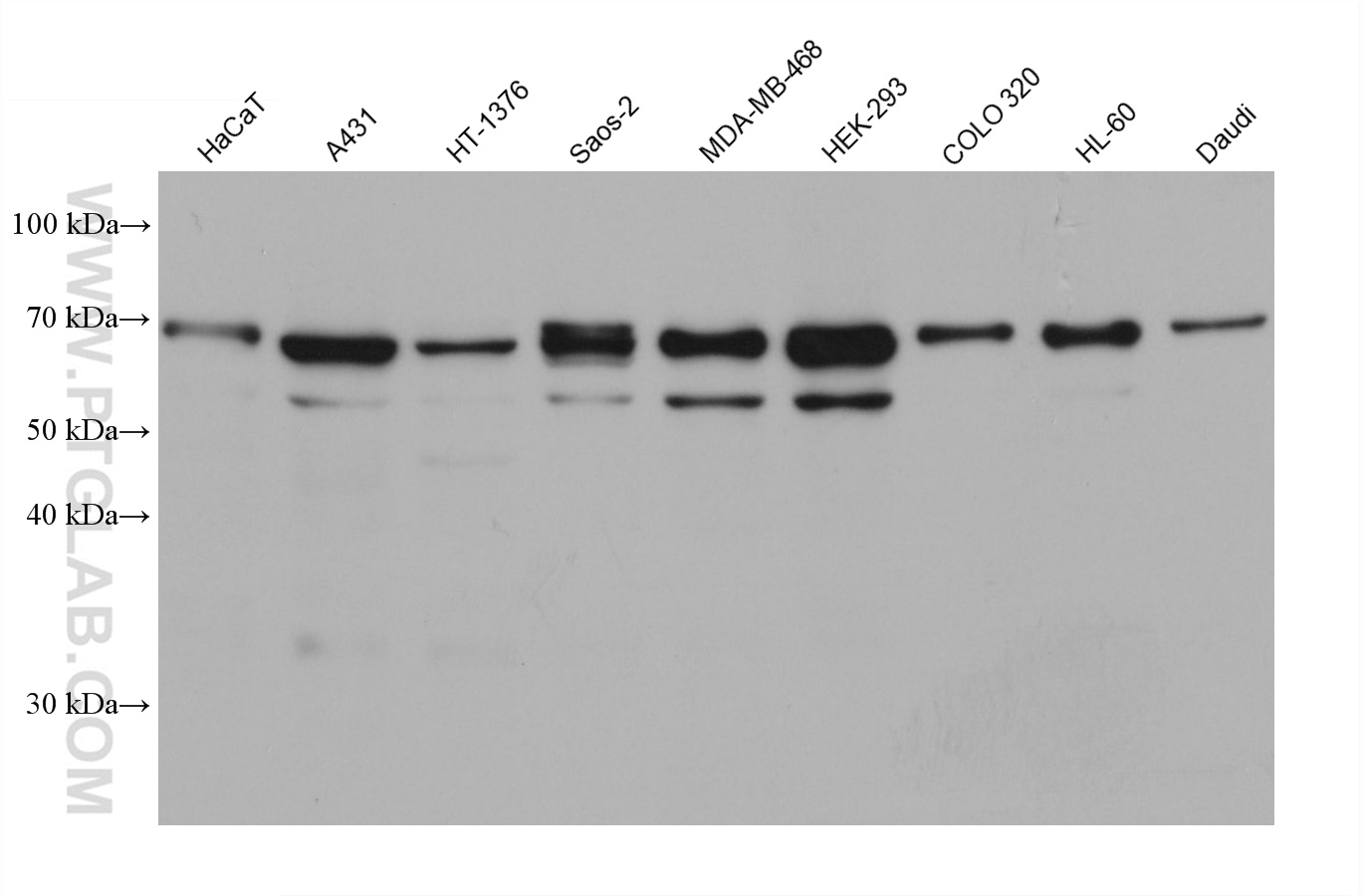验证数据展示
经过测试的应用
| Positive WB detected in | HaCaT cells, A431 cells, HT-1376 cells, Saos-2 cells, MDA-MB-468 cells, HEK-293 cells, COLO 320 cells, HL-60 cells, Daudi cells |
推荐稀释比
| 应用 | 推荐稀释比 |
|---|---|
| Western Blot (WB) | WB : 1:2000-1:10000 |
| It is recommended that this reagent should be titrated in each testing system to obtain optimal results. | |
| Sample-dependent, Check data in validation data gallery. | |
产品信息
68404-1-Ig targets NPHP5/IQCB1 in WB, ELISA applications and shows reactivity with Human samples.
| 经测试应用 | WB, ELISA Application Description |
| 经测试反应性 | Human |
| 免疫原 | NPHP5/IQCB1 fusion protein Ag8203 种属同源性预测 |
| 宿主/亚型 | Mouse / IgG2a |
| 抗体类别 | Monoclonal |
| 产品类型 | Antibody |
| 全称 | IQ motif containing B1 |
| 别名 | IQ motif containing B1, IQCB1, KIAA0036, Nephrocystin 5, PIQ, SLSN5 |
| 计算分子量 | 598 aa, 69 kDa |
| 观测分子量 | 69 kDa |
| GenBank蛋白编号 | BC005806 |
| 基因名称 | IQCB1 |
| Gene ID (NCBI) | 9657 |
| RRID | AB_3085121 |
| 偶联类型 | Unconjugated |
| 形式 | Liquid |
| 纯化方式 | Protein A purification |
| UNIPROT ID | Q15051 |
| 储存缓冲液 | PBS with 0.02% sodium azide and 50% glycerol , pH 7.3 |
| 储存条件 | Store at -20°C. Stable for one year after shipment. Aliquoting is unnecessary for -20oC storage. |
背景介绍
IQCB1, also known as NPHP5, is a nephrocystin protein that interacts with calmodulin and the retinitis pigmentosa GTPase regulator protein. It has a central coiled-coil region and two calmodulin-binding IQ domains. Localized to the primary cilia of renal epithelial cells and connecting cilia of photoreceptor cells, IQCB1 is thought to play a role in ciliary function. Mutations in this gene result in Senior-Loken syndrome type 5, a juvenile disorder characterized by defects in the waste filtering system of the kidney, as well as retinal degradation.
实验方案
| Product Specific Protocols | |
|---|---|
| WB protocol for NPHP5/IQCB1 antibody 68404-1-Ig | Download protocol |
| Standard Protocols | |
|---|---|
| Click here to view our Standard Protocols |
